#unity software inc
Explore tagged Tumblr posts
Text
This is literally the Unity thing exactly:
youtube
20 notes
·
View notes
Text
Dear Unity,
What in the actual hell is wrong with you?!
Sincerely, Potato <3
4 notes
·
View notes
Text
AppLovin's 300% surge in 2024 leaves ad-tech company with big expectations for earnings
While Nvidia’s spectacular surge remains the biggest story in the technology industry, the AI chipmaker’s performance on the market has been dwarfed this year by a digital advertising company with a specialty in gaming. AppLovin has soared 310% in 2024, beating every U.S. tech company with a market cap of at least $5 billion, according to FactSet data. Nvidia, which has led the artificial…
#Adam Foroughi#Alphabet Inc#Amazon.com Inc#Applovin Corp#Breaking News: Technology#business news#Meta Platforms Inc#NVIDIA Corp#Technology#Unity Software Inc
0 notes
Text
Profit in Sight: Trading Signals & Strategy - 29 September 2023
Trading Signals 29 September 2023. Texas Instruments Incorporated, Apple, General motors, The Buckle, Boston Properties, Unity Software, #GM #AZN #NFLX #SO #FB #D #NXST #PEP #VZ #KBH #RCL #UGI #PFE #RCL #CME #GBLE #FTI #RKT #TTD #PLTR #ETHUSD #OKE
Trading Signals 29 September 2023. Texas Instruments Incorporated, Apple, General motors, The Buckle, Boston Properties, Unity Software, Dominion Energy, Nexstar Media Group, Pepsico, Verizone, KB Home, Pfizer, Royal Caribbean Cruises Ltd trading, Global-E Online, TechnipFMC, Rocket Companies, UGI Corporation, The Trade Desk, Netflix, Meta Platforms. Palantir Technologies, Ethereum, ONEOK trading…

View On WordPress
#Double stop#ETHUSD#Meta Platforms#Netflix#Nexstar Media Group#ONEOK#Palantir Technologies#PepsiCo#Pepsico Inc#Rocket Companies#Royal Caribbean Cruises Ltd#TechnipFMC#The Southern Co#The Trade Desk#Trading signals#Trading strategy#UGI Corporation#Unity Software#Verizone
0 notes
Text
youtube
The Miraculous Horror of Stop Motion
From the same artform that brought you Coraline and Rudolph the Red-Nosed Reindeer, comes three stories that evoke the existential fear of art.
Original Music by Molly Noise
Bibliography below
Atrocity Guide. “The Animators Who’ve Spent 40 Years on a Single Film.” YouTube, 9 Oct. 2021, www.youtube.com/watch?v=73hip3pz0Xs&pp=ygUMdGhlIG92ZXJjb2F0. Accessed 19 June 2024.
Brubaker, Charles. “The Japanese Studios of Rankin/Bass.” Cartoon Research, Jerry Beck, 14 Apr. 2014, cartoonresearch.com/index.php/the-japanese-studios-of-rankinbass/.
Bute, Paris. “Introduction to “a Rankin/Bass Retrospective from a New Perspective.”” Citizen Jane, Stephens College, 19 Nov. 2021, www.citizenjane.org/home/cwwicd2ucb2fvs64kgfaocfykjhaum. Accessed 19 June 2024.
Crome, Althea. “Coraline.” Althea Crome | Micro Knitter, 2012, www.altheacrome.com/coraline. Accessed 19 June 2024.
Harold Halibut. Directed by Onat Hekimoğlu, Slow Bros., 16 Apr. 2024.
Hekimoglu, Onat, and Gabriel Schmitz. “Unite Berlin 2018 - Harold Halibut and Making a Stop Motion Game.” Unity, YouTube, 6 Aug. 2018, youtu.be/9usssSQc0wQ. Accessed 6 May 2023.
Jon "Sikamikanico" Clarke. “The Making of Harold Halibut.” XboxEra, YouTube, 21 Mar. 2024, youtu.be/WMyxM9t3o7A. Accessed 19 June 2024.
LAIKA Studios. “Sweater and Gloves: Knitting Coraline by Hand.” YouTube, 11 July 2017, youtu.be/zUvkfcGR-7U. Accessed 19 June 2024.
Mad God Productions. “Phil Tippett’s “Mad God.”” Kickstarter, 17 May 2012, www.kickstarter.com/projects/madgod/phil-tippetts-mad-god/posts.
Olson, Mathew. “Report: Michel Ancel Accused of Abusive, Disruptive Practices on beyond Good & Evil 2.” VG247, 25 Sept. 2020, www.vg247.com/report-michel-ancel-accused-of-abusive-disruptive-practices-on-beyond-good-evil-2. Accessed 19 June 2024.
Ono, Kosei. “Tadahito Mochinaga: The Japanese Animator Who Lived in Two Worlds.” Animation World Network, AWN, Inc, 1 Dec. 1999, www.awn.com/animationworld/tadahito-mochinaga-japanese-animator-who-lived-two-worlds.
Orland, Kyle. “Claptrap Voice Actor Accuses Gearbox CEO of Assault, Underpayment.” Ars Technica, 7 May 2019, arstechnica.com/gaming/2019/05/claptrap-voice-actor-accuses-gearbox-ceo-of-assault-underpayment/. Accessed 19 June 2024.
Pilling, Jayne. A Reader In Animation Studies. Indiana University Press, 1998. Project MUSE muse.jhu.edu/book/40033.
Prehistoric Beast. Directed by Phil Tippett, Tippett Studios, 1984. https://www.youtube.com/watch?v=hlaXIRTjNfo
Randles, Jonathan. “VFX Studio with Star Wars, Jurassic Park Credits Goes Bankrupt.” Bloomberg Law, 1 May 2024, news.bloomberglaw.com/bankruptcy-law/vfx-studio-with-star-wars-jurassic-park-credits-goes-bankrupt. Accessed 19 June 2024.
Shanley, Patrick. “Gearbox Software CEO Accused of Contempt in Latest Filing.” The Hollywood Reporter, 27 Aug. 2019, www.hollywoodreporter.com/business/digital/gearbox-software-ceo-accused-contempt-latest-filing-1235064/. Accessed 19 June 2024.
The Making of “Jurassic Park.” Directed by John Schultz, Amblin Entertainment, 1995. https://youtu.be/8r01mk6F_Pk
The Making of Mad God. Directed by Maya Tippett, Shudder, 2021. https://youtu.be/sfUOHh0xmwc
The Tale of the Fox. Directed by Irene Starewicz and Ladislas Starevich, UFA GmbH, 10 Apr. 1941. https://youtu.be/Us_Pn6Q1dBQ
Wikipedia contributors. "List of films with longest production time." Wikipedia, The Free Encyclopedia. Wikipedia, The Free Encyclopedia, 12 Jun. 2024. Web. 19 Jun. 2024.
Wikipedia contributors. "List of media notable for being in development hell." Wikipedia, The Free Encyclopedia. Wikipedia, The Free Encyclopedia, 19 Jun. 2024. Web. 19 Jun. 2024.
Wikipedia contributors. "List of Rankin/Bass Productions films." Wikipedia, The Free Encyclopedia. Wikipedia, The Free Encyclopedia, 9 Jun. 2024. Web. 19 Jun. 2024.
Wikipedia contributors. "Tadahito Mochinaga." Wikipedia, The Free Encyclopedia. Wikipedia, The Free Encyclopedia, 28 Nov. 2023. Web. 19 Jun. 2024.
Wilson, Josh. “Phil Tippett: 24 Frames per Second < the Fabulist Words & Art.” The Fabulist Words & Art, 5 Nov. 2021, fabulistmagazine.com/24-frames-per-second-the-phil-tippett-interview/.
Worse than the Demon. Directed by Maya Tippett, Shudder, 2013. https://youtu.be/ghKqvDNRe4c
#video#video essay#youtube#stop motion#harold halibut#Mad God#phil tippett#Rankin Bass#laika studios#Animation#The Overcoat#yuri norstein#Francheska Yarbusova#Youtube
222 notes
·
View notes
Text
About Unity these past few days
A lot of people have asked me about Unity and their strange new per-install charges policy that they rolled out on September 12th, 2023. I wanted to give them at least 24 hours before I posted my take on it - let the dust settle a bit so I could get a chance to read the new policy properly and all that. First, however, I think we need to take a step back and get a wider perspective. Unity Software Inc. is in some serious financial trouble. Here are their operating numbers from 2019 to 2023.
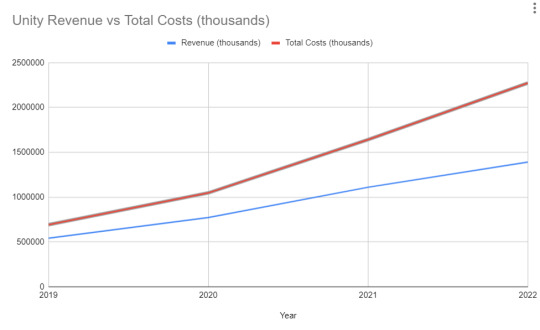
The blue line here is how much money they take in and the red line is the amount of money they are spending each year. You may notice that they are spending significantly more money year over year than they earn. In fact, over the past 12 months alone (August 2022 to August 2023), Unity Software Inc. has lost almost $1 billion.
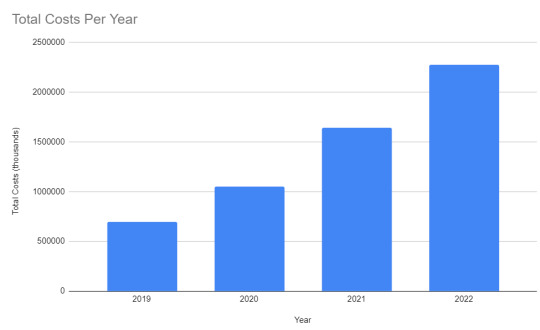
In 2022, Unity spent four times as much money as they did in 2019. If they had managed to keep costs at double their spending in 2019, they still would have earned $243 million in profit. Instead, they lost $882 million in 2022.
Where does all of this cost come from? In any software company like Unity, the vast vast majority of costs comes from employee salaries. And we can directly see it in Unity's number of employees:
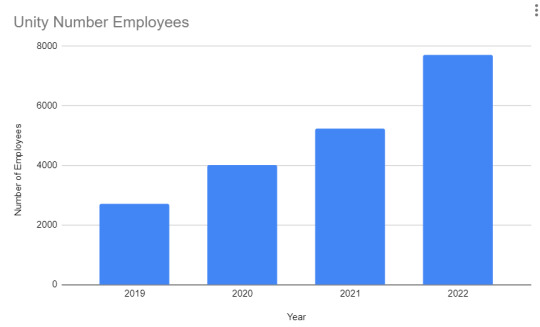
Unity Software Inc. more than tripled its headcount from 2019 to 2022, and it did all of this hiring during the pandemic while competing with many many other developers all trying to hire from the same pool. I don't work for Unity, but I was in the market and I had lots of recruiters trying to recruit me during that time.

In short, Unity is suffering from the same miscalculation that Embracer Group did, that EA did, that Activision-Blizzard did, that Square-Enix did, and just about everybody else in the tech industry - they misjudged the good times at the beginning of the pandemic, overspent hiring people thinking the good times would last, and are now scrambling to figure out how to survive. The difference is that Unity was getting all of their operating money from Venture Capitalists (VCs) hoping that they would eventually become profitable, but VC money has all but dried up because it's become much more expensive to borrow money over the past two years.

As a result, the Unity executives are likely grasping at straws in hopes of saving a sinking ship. This wild and decidedly senseless pricing plan is their (seemingly-desperate) attempt to juice their revenues. It really makes very little sense from the developer perspective, which is what makes the whole thing reek of desperation. That isn't greed talking, it's survival. My guess is that Unity is currently desperately looking for a buyer to save them and doing whatever they can to buy themselves some more runway. They already announced layoffs back in May, but I suspect they'll probably have to announce some really big layoffs (e.g. 40-50%) soon. Unity Software Inc. is living on borrowed time and they know it.
[Join us on Discord] and/or [Support us on Patreon]
Got a burning question you want answered?
Short questions: Ask a Game Dev on Twitter
Long questions: Ask a Game Dev on Tumblr
Frequent Questions: The FAQ
#the business of video games#unity 3d#business business business#where the money goes#financial things
460 notes
·
View notes
Text
Video Game Enthusiasts Lament that the Best Game of the Year Is Essentially Softcore Fetish Pornography

"I mean, fuck's sake," says Derek "CuntBlaster97" Przybelski, a "gamer" from Salt Lake City speaking to Facts! News. "So many games came out in 2024. A new Tekken, a new Dragon Age, a Final Fantasy 7 remaster... and basically the only games worth playing are two goddamned co-op shooters, something that looks like what my solitaire-addicted grandma would get peer pressured into trying in an alley, and this fucking shit," gesturing to the 8-foot-tall F-cup goat person depicted on his computer's monitor. He proceeded to "run" a "dungeon," frowning and muttering angrily while having the most fun he's had since he was a child.
"It's basically fucked," says another video-gamer who wished to remain anonymous. "Like, this is the only actual good game that's released since September," referring to Saber Interactive's Warhammer 40,000: Space Marine 2. "I can't play that one though or I'll get banned from my girlfriend's Discord server for being a chud. But, like, fuck's sake, I can't play this one either. What if my parents see this?," gesturing to his "gaming avatar", a two-foot tall, 200-pound opossum woman which nobody over the age of 30 would be able to recognize as sexualized. "I have Steam Family Share with my little brother. If he sees this in his library I'm fucked... it's probably the only thing I'm gonna play for the next month though, at least until the next Abiotic Factor update."
"Atlyss is part of a larger trend," according to Vanessa Dobbins, a researcher at the University of Waterloo's Games Institute. "In the 90s with the advent of the M-rated video game, there was mostly a clear deliniation between good games, which were wholesome, and what we in the field call 'slop,' which was edgy and sexual -- which at the time meant anorexic women in leather. World of Warcraft by Blizzard Entertainment, being a good game yet edgy and sexual, was an outlier that caused changes in the behavior of Homo stupidens, the common video game developer. Now good games tried to become sexual in imitation of Warcraft, whereas slop games rejected sexuality in an attempt to seem superior to it. With Japanese gaming falling victim to anime in the mid 2000s, however, good games mostly became the territory of Homo stupidens basementii. This subspecies generally does not begin seeking a mate until relatively later in their life cycle, resulting in a shift in sexual games from the likes of Bayonetta towards more abstract sexual imagery, like the black slime from Changed, or in this case, ass-cheeks wobbling so hard that they should rip off."
An inside source at Unity Technologies, Inc., owners of the "Unity" video-game software which was used to create Atylss, told Facts! News that they are working hard with Microsoft Corporation and Sony Group to do as much as they can to prevent further good games from being released in the future. "This one slipped through the cracks, but we are working night and day to make sure this sort of thing doesn't happen again."
3 notes
·
View notes
Text
The situation is still developing, and it looks like there are signs of insider trading going on as well, lots of shares got sold a few days before the news got out.

Sounds like Microsoft told them to fuck off with their rent-seeking bullshit.
I think the saddest part about Unity's godawful news is that a lot of games are going to just. disappear.
it's like Unity is trying to go the way of streaming where the hidden gems and cult classics don't make enough money, so, they're taken offline. except this time it's with games (mostly indie).
to put it in perspective, hollow knight, cuphead, and ori are made in unity. so are night in the woods, tunic, and countless more indie gems. hell, AMONG US is made in unity. if the devs of any of these games can't shell out the outrageous cost, then maybe the devs will take them offline. and we'll just. never be able to play them anymore
it's a sad possibility that I don't think any of us ever had to consider. but now we do.
27K notes
·
View notes
Text
Animation Software Market Size, Share, Scope, Analysis, Forecast, Growth and Industry Report 2032: Cloud-Based Solutions and SaaS Trends
Animation Software Market Size was valued at USD 141.8 Billion in 2023 and is expected to reach USD 191.1 Billion by 2032, growing at a CAGR of 3.4% over the forecast period 2024-2032.
Animation Software Market is witnessing a significant surge due to advancements in technology and increasing demand for digital content. The rise of streaming platforms, gaming, and virtual production has expanded the market scope globally. Innovative tools and user-friendly interfaces are drawing professionals and beginners alike to adopt animation software.
Animation Software Market continues to grow rapidly as industries across entertainment, education, advertising, and architecture integrate animated content into their services. The global demand for visually compelling and interactive content has encouraged both large enterprises and independent creators to invest in professional-grade tools. Cloud-based platforms, AI integration, and real-time rendering have further accelerated the adoption of modern animation solutions.
Get Sample Copy of This Report: https://www.snsinsider.com/sample-request/4588
Market Keyplayers:
Adobe Systems Incorporated (Adobe Animate, Adobe After Effects)
Autodesk, Inc. (Autodesk Maya, Autodesk 3ds Max)
Toon Boom Animation Inc. (Toon Boom Harmony, Toon Boom Storyboard Pro)
Blender Foundation (Blender, Grease Pencil)
Maxon Computer GmbH (Cinema 4D, Redshift)
Corel Corporation (Corel Painter, CorelDRAW)
Houdini Software (Houdini, Houdini Apprentice)
Cinema 4D by Maxon (Cineware, Bodypaint 3D)
Smith Micro Software, Inc. (Moho Pro, Poser)
OpenToonz (OpenToonz, Toonz Premium)
Krita Foundation (Krita, Krita Gemini)
Daz 3D (Daz Studio, Daz 3D Bridge)
Unity Technologies (Unity, Unity Pro)
Epic Games (Unreal Engine, MetaHuman Creator)
Pencil2D Animation (Pencil2D, Pencil2D Editor)
Dragonframe (Dragonframe, Dragonframe Lite)
TVPaint Animation (TVPaint Animation 11, TVPaint Animation Pro)
Cacani (Cacani 2D Animation, Cacani Mobile)
CrazyTalk Animator (Cartoon Animator 4, CrazyTalk 8)
Trends Shaping the Market
AI and Machine Learning Integration Animation software is increasingly adopting AI-powered features like auto lip-sync, motion capture, and intelligent scene generation to boost productivity and creativity.
Cloud-Based Collaboration Remote work and global collaboration have increased the demand for cloud-based animation tools, enabling teams to work on the same project from different locations in real time.
Real-Time Rendering and VR Integration Software platforms are now offering real-time rendering capabilities and supporting virtual reality (VR) and augmented reality (AR) outputs for immersive experiences in gaming and simulations.
Rise of 2D/3D Hybrid Tools Creators are opting for versatile software that offers both 2D and 3D animation capabilities, streamlining workflows and expanding creative possibilities.
Enquiry of This Report: https://www.snsinsider.com/enquiry/4588
Market Segmentation:
By Product
2D Animation
3D Animation
Flipbook Animation
Stop Motion
By Solution:
Software
Services
Integration & Design Services
Consulting Services
Training & Education Services
By Deployment
On-premise
Cloud-based
By End-use
Media & Entertainment
Architecture & Construction
Automotive
Healthcare & Life Sciences
Education & Academics
Government & Defense
Market Analysis
High Demand Across Industries: The animation software market is expanding beyond traditional film and television, reaching into education, healthcare, advertising, architecture, and corporate training.
North America Leads, APAC Grows Rapidly: North America dominates the market due to the presence of major studios and tech companies, while the Asia-Pacific region shows rapid growth due to rising digital adoption and outsourcing services.
Growth of Indie and Freelance Creators: Affordable and intuitive animation tools are empowering independent creators and small businesses to produce professional-grade content without large budgets.
Subscription-Based Models Driving Revenue: SaaS (Software as a Service) models are gaining popularity, offering flexible pricing and constant updates, making high-quality animation software more accessible.
Future Prospects
The future of the animation software market looks promising with several transformative developments on the horizon:
Increased Use in Education and E-Learning: Animation is becoming a key tool in e-learning platforms, making complex concepts more engaging and easier to understand for learners of all ages.
Integration with Metaverse and Virtual Environments: As the concept of the metaverse evolves, animation software will play a crucial role in creating avatars, virtual spaces, and interactive storytelling environments.
Automation and Procedural Animation: Future tools will offer more automated processes, reducing manual keyframing through procedural techniques, thereby increasing production speed.
Greater Accessibility and Mobile-Friendly Solutions: Developers are focusing on mobile-friendly and low-resource tools to cater to users with limited hardware, expanding market reach in emerging economies.
Access Complete Report: https://www.snsinsider.com/reports/animation-software-market-4588
Conclusion
The Animation Software Market is evolving rapidly, driven by innovation, cross-industry applications, and a global appetite for dynamic digital content. As AI, cloud computing, and immersive technologies continue to redefine creative workflows, the market is expected to grow substantially in the coming years. Companies that prioritize usability, flexibility, and forward-looking features will lead the charge in shaping the future of digital animation. Whether for blockbuster films, educational content, or interactive media, animation software is becoming an essential tool in modern communication and storytelling.
About Us:
SNS Insider is one of the leading market research and consulting agencies that dominates the market research industry globally. Our company's aim is to give clients the knowledge they require in order to function in changing circumstances. In order to give you current, accurate market data, consumer insights, and opinions so that you can make decisions with confidence, we employ a variety of techniques, including surveys, video talks, and focus groups around the world.
Contact Us:
Jagney Dave - Vice President of Client Engagement
Phone: +1-315 636 4242 (US) | +44- 20 3290 5010 (UK)
#Animation Software Market#Animation Software Market Scope#Animation Software Market Growth#Animation Software Market Trends
0 notes
Text
Examples of 3D artists:
Neopork:


The artist, Neopork on 'ArtStation' has modelled and render a digital model based on SpaceX's Starship rocket.
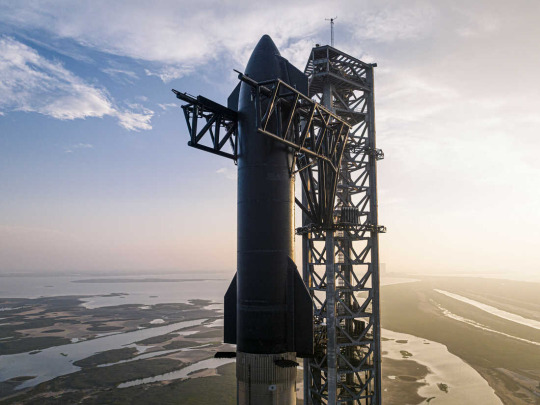
They made these models using software like 'Maya' to model the model itself and use 'Photoshop' to do the texturing. They also did this for their model of the Dragon capsule for Falcon 9.
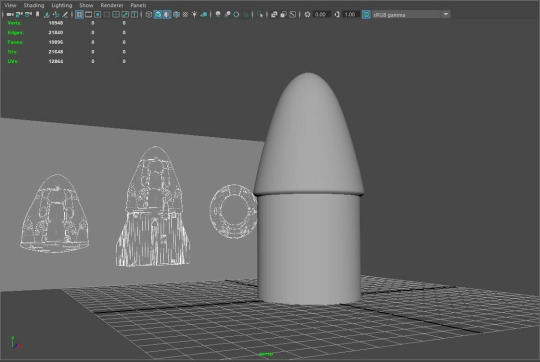
These models are designed to be realistic and for the most part accurate to sources they used like pictures. They have not clarified what processes were used during the development of these models.
Zuzzana Skąpska:

Zuzzana Skąpska is a digital 3D artist on 'ArtStation'. They created a model based on ULA's (United Launch Alliance) Atlas V rocket.

Interestingly, they used 'Blender' (which I use) to model the rocket. To texture the model, they used 'Adobe Substance 3D Painter'. The model itself looks realistic with the pipes and overall shape of the rocket. They have not clarified what processes were used during the development of this model.
3dxin Studio:
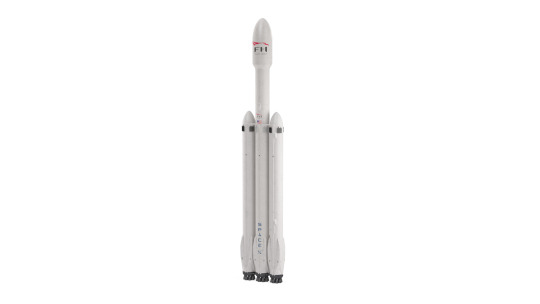
3dxin Studio is another artist found on 'ArtStation'. They have based their model on SpaceX's Falcon Heavy rocket. Unfortunately, they haven't specified what mediums were used in the making of this model. They have not clarified what processes were used during the development of this model either.

Kim Syberg:

Kim Syberg's model on 'ArtStation'. It was based on '2001 A Space Odyssey', the 'Apollo program', and vintage planes/cars. Their main reason for making the model was to explore workflows and techniques. Syberg used a variety of software to make this model. They used 'LightWave 3D', '3DCoat', 'Octane Render', and 'Photoshop'. The model isn't designed to be realistic as it is a sci-fi design. They have not clarified what processes were used during the development of this model.
Ilya Shevchuk:

Ilya Shevchuk made this model concept model and posted it on 'ArtStation'. They use an even wider variety of software for the model. These include 'Maya', 'Marmoset Toolbag', 'Substance 3D Designer', 'Substance 3D Painter', 'Blender', and 'Photoshop'. The model was based on a heavy rocket carrier and a space shuttle. I find that the shuttle aspect of the model has been made clear by the design of the tiles. The textures used for the tiles look very realistic. The engines look realistic too. However, the rest appears to be a bit too sci-fi. They have not clarified what processes were used during the development of this model.
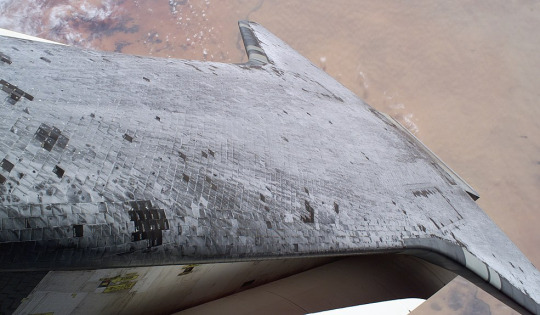
Marc Gauvin:
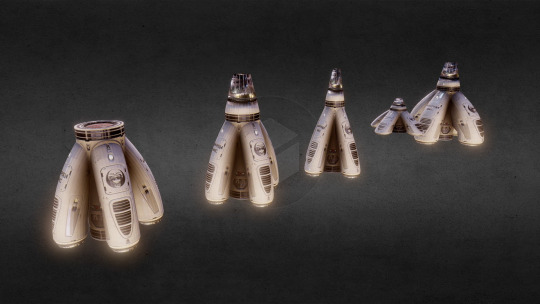
Marc Gauvin is another artist that I have found on 'ArtStation'. They made this fuel tank model for a mod for the game 'Kerbal Space Program'. They used 5 different mediums for this model. This includes 'ZBrush', 'Substance 3D Painter', 'Unity', 'Blender', and 'Kerbal Space Program'. The design doesn't look that realistic as the side tanks curve too much. The overall shape looks sci-fi in my opinion. They have not clarified what processes were used during the development of this model.
ljsz23:
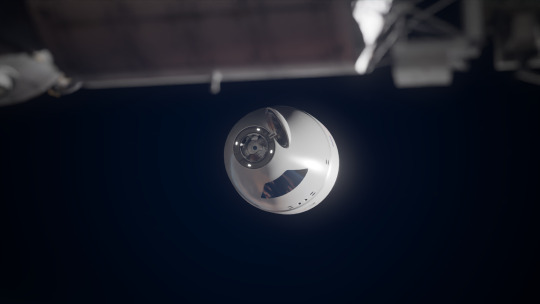
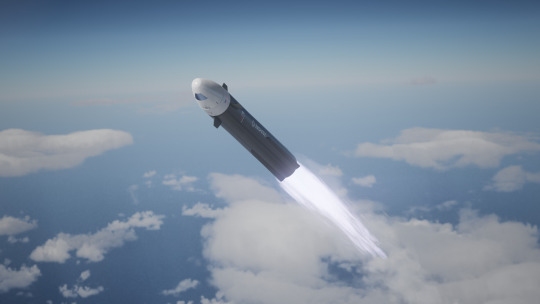
I found the artist called ljsz23 on 'ArtStation' that made amodel based on the crew capsule for Rocket Lab's Neutron rocket that's still in development. They constructed this model with only two references that Rocket Lab has released. The two mediums they used for this model is 'Blender' and 'Substance 3D Painter'. This model does look quite realistic as it closely resembles 'Rocket Lab's' upcoming rocket called the "Neutron". They have not clarified what processes were used during the development of this model.

Rahul Prabhu C:
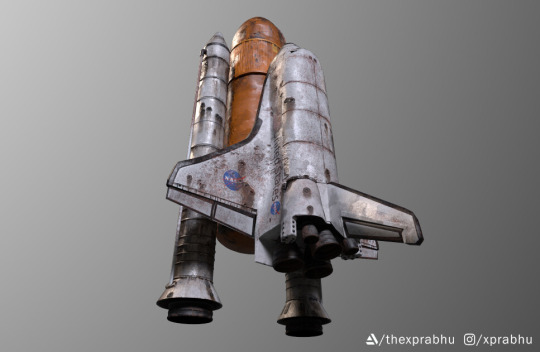
The 'ArtStation' artist, Rahul Prabhu C made a model based on the space shuttle named "Discovery". They designed it to look like its been abandoned during an alien invasion. The mediums used for this model are 'Maya', 'Substance 3D Painter', and 'Photoshop'. The shape of the model is realistic and true to the space shuttle. The rust textures also look realistic. However, I don't think it looks very accurate with how the rust textures are on the external fuel tank. The orange colour in the foam is already rust caused by exposure to UV light. They have not clarified what processes were used during the development of this model.

Trorid:

On 'ArtStation' encountered the artist called "Trorid". They have based their model on the raptor engines made by SpaceX. The only medium they used to make the model is 'Blender'. Both the modelling and texturing was done 'Blender' which I plan on doing the same. As a whole, I feel that the model looks realistic. They have not clarified what processes were used during the development of this model.

0 notes
Text

user @weabooweedwitch: "I'm jumping in here to say the Unity CEO sold 2000 stocks in the company before this decision was publicly announced. There is an extremely high chance CEO Dickhead is just trying to short his own company for profit. The FTC is going to be so far up his ass he'll be coughing up quarters"
He sure did! Check out this article from just a couple days ago. https://finance.yahoo.com/news/unity-software-incs-president-ceo-050515124.html
For my money, the most interesting part of the whole Unity debacle is that by a strict reading of the new policies, ceasing to offer one's Unity-based games for sale won't even work as a means of getting around the fees: if your Unity-based game is no longer available for sale after January 1st, you'd still be on the hook for the Unity Runtime installation fee for new installs performed by previous legitimate purchasers, even in cases where such installs are performed from physical or archival media or are otherwise impossible for you to prevent. It's going to be fascinating to see what happens if Unity's publisher ever actually tries to enforce payment that scenario.
4K notes
·
View notes
Text
"Dream It, Create It: Virtual Content Creation Market 2025–2033 🌈💻"
Virtual Content Creation Market is revolutionizing digital media by enabling the development of engaging and immersive content through advanced technologies like virtual reality (VR), augmented reality (AR), and 3D modeling. This market encompasses software tools, platforms, and services that empower creators to design interactive experiences, particularly in the entertainment, education, and marketing sectors. The demand for dynamic and captivating digital content has propelled the market’s growth, as global audiences increasingly engage with immersive media.
To Request Sample Report: https://www.globalinsightservices.com/request-sample/?id=GIS31406 &utm_source=SnehaPatil&utm_medium=Article
Video content creation leads the market, driven by the demand for compelling visual media across various industries. The 3D modeling and animation sub-segment follows closely, benefitting from its application in gaming, film, and virtual reality. As digital adoption accelerates, the Asia-Pacific region stands out as the top-performing market, driven by rapid technological adoption and a burgeoning talent pool. North America holds the second-largest share, bolstered by its strong media and entertainment industry and robust technological infrastructure.
In 2023, the Virtual Content Creation Market was valued at 1.2 billion units, with projections to reach 2.5 billion units by 2033. The 3D modeling segment currently holds the largest share at 45%, followed by VR content at 30%, and AR experiences at 25%. Key players such as Adobe Inc., Autodesk Inc., and Unity Technologies are at the forefront, innovating through cloud-based solutions and expanding 3D design capabilities.
The market is poised for significant growth, with a projected CAGR of 15% over the next decade. AI, machine learning, and real-time rendering technologies will be crucial in unlocking new opportunities, although challenges like high development costs and the need for skilled professionals remain
#VirtualContentCreation #3DModeling #ImmersiveTechnology #AugmentedReality #VirtualReality #ContentCreation #DigitalMedia #AIinDesign #TechInnovation #GameDevelopment #DigitalMarketing #CreativeIndustries #CloudBasedSolutions #InteractiveMedia #FutureOfContent
0 notes
Text
Utility Asset Management Market 2024 : Size, Growth Rate, Business Module, Product Scope, Regional Analysis And Expansions 2033
The utility asset management global market report 2024 from The Business Research Company provides comprehensive market statistics, including global market size, regional shares, competitor market share, detailed segments, trends, and opportunities. This report offers an in-depth analysis of current and future industry scenarios, delivering a complete perspective for thriving in the industrial automation software market.
Utility Asset Management Market, 2024 report by The Business Research Company offers comprehensive insights into the current state of the market and highlights future growth opportunities.
Market Size - The utility asset management market size has grown rapidly in recent years. It will grow from $4.43 billion in 2023 to $4.97 billion in 2024 at a compound annual growth rate (CAGR) of 12.1%. The growth in the historic period can be attributed to infrastructure expansion and development, regulatory compliance and safety, asset performance and reliability, lifecycle cost management.
The utility asset management market size is expected to see rapid growth in the next few years. It will grow to $7.43 billion in 2028 at a compound annual growth rate (CAGR) of 10.5%. The growth in the forecast period can be attributed to smart grid integration, renewable energy integration, data analytics and predictive maintenance, resilience and disaster preparedness. Major trends in the forecast period include adoption of advanced analytics and AI, IoT and sensor integration, shift towards predictive maintenance, focus on cybersecurity and data privacy.
Order your report now for swift delivery @ https://www.thebusinessresearchcompany.com/report/utility-asset-management-global-market-report
The Business Research Company's reports encompass a wide range of information, including:
1. Market Size (Historic and Forecast): Analysis of the market's historical performance and projections for future growth.
2. Drivers: Examination of the key factors propelling market growth.
3. Trends: Identification of emerging trends and patterns shaping the market landscape.
4. Key Segments: Breakdown of the market into its primary segments and their respective performance.
5. Focus Regions and Geographies: Insight into the most critical regions and geographical areas influencing the market.
6. Macro Economic Factors: Assessment of broader economic elements impacting the market.
Market Drivers - The increased use of automation technologies is expected to propel the growth of the utility asset management market going forward. Automation technologies include a wide range of methods, processes, and systems that use diverse technologies to do tasks with minimal human participation. Utility asset management (PAM) helps automation technologies by providing a comprehensive approach of managing and maintaining physical assets in industrial settings and enhancing overall performance. For instance, in October 2022, according to the International Federation of Robotics, a Germany-based non-profit organization, in 2021, factories worldwide installed 517,385 new industrial robots, representing a 31% annual growth rate. Therefore, the increased use of automation technologies is driving the growth of the utility asset management market.
Market Trends - Major companies operating in the utility asset management market are focusing on innovation, such as enterprise asset management solutions, to advance their market offering. Enterprise asset management (EAM) solutions encompass the management and maintenance of physical assets owned by a company throughout its entire lifecycle. For instance, in November 2023, Trimble Inc., a US-based software, hardware, and services technology company, launched Trimble Unity AMS to enhance the reliability and efficiency of electric utilities. Trimble Unity AMS, built on the Cityworks enterprise asset management platform, enables electric utilities to manage their infrastructure assets effectively throughout their lifecycle. This includes permits and construction to operations, maintenance, and replacement. The solution connects with Esri ArcGIS, the system of record for asset and network information, to provide a centralized source of current data for decision-making and operations. This GIS-centric method improves operational efficiency and situational awareness in electric utilities.
The utility asset management market covered in this report is segmented –
1) By Type: Public Utility, Private Utility 2) By Component: Hardware, Software, Services 3) By Application: Electric, Gas, Water
Get an inside scoop of the utility asset management market, Request now for Sample Report @ https://www.thebusinessresearchcompany.com/sample.aspx?id=14525&type=smp
Regional Insights - North America was the largest region in the utility asset management market in 2023. Asia-Pacific is expected to be the fastest-growing region in the forecast period. The regions covered in the utility asset management market report are Asia-Pacific, Western Europe, Eastern Europe, North America, South America, Middle East, Africa.
Key Companies - Major companies operating in the utility asset management market are Siemens AG, International Business Machines Corporation, General Electric Company, Oracle Corporation, Schneider Electric SE, SAP SE, ASEA Brown Boveri, Jacobs Solutions Inc., Emerson Electric Co., CGI Inc., John Wood Group PLC, Hexagon AB, Black & Veatch, Arcadis NV, Mott MacDonald, GHD Group Pty Ltd., Environmental Systems Research Institute, Bentley Systems, Industrial and Financial Systems, Accruent, Infor, Sensus Metering Systems
Table of Contents 1. Executive Summary 2. Utility Asset Management Market Report Structure 3. Utility Asset Management Market Trends And Strategies 4. Utility Asset Management Market – Macro Economic Scenario 5. Utility Asset Management Market Size And Growth ….. 27. Utility Asset Management Market Competitor Landscape And Company Profiles 28. Key Mergers And Acquisitions 29. Future Outlook and Potential Analysis 30. Appendix
Contact Us: The Business Research Company Europe: +44 207 1930 708 Asia: +91 88972 63534 Americas: +1 315 623 0293 Email: [email protected]
Follow Us On: LinkedIn: https://in.linkedin.com/company/the-business-research-company Twitter: https://twitter.com/tbrc_info Facebook: https://www.facebook.com/TheBusinessResearchCompany YouTube: https://www.youtube.com/channel/UC24_fI0rV8cR5DxlCpgmyFQ Blog: https://blog.tbrc.info/ Healthcare Blog: https://healthcareresearchreports.com/ Global Market Model: https://www.thebusinessresearchcompany.com/global-market-model
0 notes
Text
Is Unity the Next Big Thing? Discover the Shocking Forecast Behind Its Stock Price!
Discover how to forecast stock price trends with an in-depth analysis of Unity Software Inc. Uncover insights into its core business. #UnitySoftwareInc #U #Stockpriceforecasting #Technicalindicators #Gamingstocks #AR/VRtechnology #Investmentstrategies #Technicalanalysis
In the high-stakes world of tech stocks, predicting the future of a dynamic, fast-growing company like Unity Software Inc. can feel like deciphering a complex code. But what if you could unlock the secrets behind its 3D engine and emerging technologies to forecast its next market move? Dive in and discover the insights that could reshape your investment strategy. Continue reading Is Unity the…
#3D development platform#AR/VR technology#Competitive Landscape#Gaming stocks#Investment#Investment Insights#Investment strategies#Revenue growth analysis#Stock Forecast#Stock Insights#Stock price forecasting#Technical analysis#Technical indicators#U
0 notes
Text
Metaverse Market by Region: Segmentation, Opportunities, and Regional Insights
The global metaverse market size was valued at USD 82.02 billion in 2023, with a projected growth at a compound annual growth rate (CAGR) of 43.9% from 2024 to 2030. The integration of spatial technologies allows users to interact with digital content as if it exists in their physical surroundings, creating a seamless blend between virtual and real-world experiences. Companies are adopting this technology to develop immersive products and services that elevate user interaction, bridging the digital and physical worlds, and sparking innovation across industries. For example, in January 2024, Unity Technologies, a U.S.-based software company, partnered with Apple Inc. to advance spatial experiences, including augmented reality (AR) and spatial computing. This partnership aims to empower developers to create interactive digital content that merges with physical environments, enriching user experiences and pushing forward the development of the metaverse.
Innovations in augmented reality (AR), virtual reality (VR), mixed reality (MR), and 3D visualization are key drivers of market expansion, enhancing immersive experiences for businesses. These technologies enable improved visualization, simulation, and prototyping across sectors. Additionally, the focus on digital twins and smart factories further enhances their potential. Rising investments and strategic partnerships underscore market growth, highlighting increased support and interest. Emphasis on delivering improved customer experiences is driving both adoption and innovation. Integrating AR, VR, MR, and 3D visualization helps industries simplify processes and reduce costs. Businesses leverage these tools for training, remote collaboration, and product design, resulting in higher efficiency and productivity. Moreover, the demand for immersive experiences in sectors like entertainment, gaming, and education continues to fuel market growth.
Gather more insights about the market drivers, restrains and growth of the Metaverse Market
Regional Insights
North America:
North America led the metaverse market, accounting for 43.7% of the share in 2023. North American consumers are early adopters of cutting-edge technologies, frequently investing in VR headsets, metaverse-compatible gaming consoles, and high-speed internet needed for smooth metaverse experiences. This trend establishes a strong foundation for metaverse-related products and services in the region. The gaming industry, fueled by North America’s well-established gaming culture, is expected to be a major driver of the metaverse, with platforms like Roblox and Fortnite, developed by companies such as Roblox Corporation and Epic Games, actively incorporating metaverse elements. Their established user bases align well with the evolving metaverse landscape, favoring early adoption within the business environment.
United States:
The metaverse market in the United States is projected to grow significantly from 2024 to 2030. Growth factors include the increasing accessibility and affordability of VR and AR technologies, along with growing interest from consumers and businesses in digital experiences.
Europe:
European businesses across diverse industries, such as gaming, retail, real estate, and education, are exploring metaverse applications for marketing, customer engagement, training, and virtual collaboration. This corporate adoption is a significant driver of the demand for metaverse solutions and services across the region.
United Kingdom:
The UK’s metaverse market sees gaming as the primary driver of adoption, supported by the country's strong gaming culture and a large community of avid gamers accustomed to immersive digital experiences.
Germany:
Germany holds a substantial share of the metaverse market in Europe. The country’s growth in this space is driven by an awareness of the transformative potential of virtual environments to improve productivity in sectors like manufacturing, engineering, and retail. By utilizing the immersive aspects of the metaverse, German businesses are optimizing processes, fostering collaboration, and enhancing supply chain management.
Asia Pacific:
The Asia Pacific region is expected to register the fastest CAGR from 2024 to 2030. Significant investments in technological infrastructure and innovation, such as smart cities, digital economies, and 5G networks, are propelling the development of advanced digital ecosystems. These investments create an environment conducive to metaverse growth by facilitating connectivity, immersive experiences, and broad access to virtual spaces. With a massive and rapidly growing digital population, millions of users in Asia Pacific are adopting technology and digital experiences, laying fertile ground for the metaverse’s adoption and expansion, especially in gaming, social media, and digital entertainment.
China:
China’s metaverse market is expected to experience considerable growth over the forecast period. The country’s vast and digitally engaged population supports the optimal environment for adopting and expanding metaverse applications and services.
India:
India's metaverse market is set to grow significantly from 2024 to 2030, driven by rising internet penetration and smartphone usage, which provide a substantial user base for metaverse applications. Advancements in VR and AR are making metaverse experiences more accessible and appealing to Indian consumers.
Middle East & Africa (MEA):
In the MEA region, virtual events have gained momentum as organizations and individuals seek innovative ways to connect and engage. These events span areas like conferences, concerts, exhibitions, and social gatherings and are powered by metaverse applications that offer immersive, interactive experiences. The e-commerce and retail sectors in MEA are also incorporating metaverse elements to enhance customer experiences and drive sales.
Browse through Grand View Research's Category Next Generation Technologies Industry Research Reports.
The global generative AI market sizewas valued at USD 16.87 billion in 2024 and is projected to grow at a CAGR of 37.6% from 2025 to 2030.
The global voice communication control system market sizewas estimated at USD 4.26 billion in 2024 and is projected to grow at a CAGR of 6.9% from 2025 to 2030.
Key Companies & Market Share Insights
Leading companies have employed strategies such as product launches and development initiatives, along with expansions, mergers, acquisitions, contracts, agreements, partnerships, and collaborations, as central tactics to grow their market share. These approaches enable firms to deepen market penetration and strengthen their competitive position. For example, in February 2024, The Walt Disney Company, a prominent American media conglomerate, partnered with Epic Games Inc., investing $1.5 billion to gain a substantial ownership stake in the company. This strategic partnership is aimed at building a vast games and entertainment universe connected to Fortnite, where Disney plans to incorporate its iconic stories and characters. Leveraging Unreal Engine, this collaboration seeks to deliver an immersive metaverse experience for both players and fans, blending Disney’s storytelling heritage with Epic Games’ cutting-edge virtual platform.
Key Metaverse Companies:
The following are the leading companies in the metaverse market. These companies collectively hold the largest market share and dictate industry trends.
Active Theory
Antiersolutions.
ByteDance Ltd.
Decentraland
Epic Games, Inc.
Lilith Games
Meta
Microsoft
NetEase, Inc.
Nextech AR Solutions Inc.
NVIDIA Corporation
Roblox Corporation
Tencent Holdings Ltd.
The Sandbox
Unity Technologies
Order a free sample PDF of the Market Intelligence Study, published by Grand View Research.
0 notes